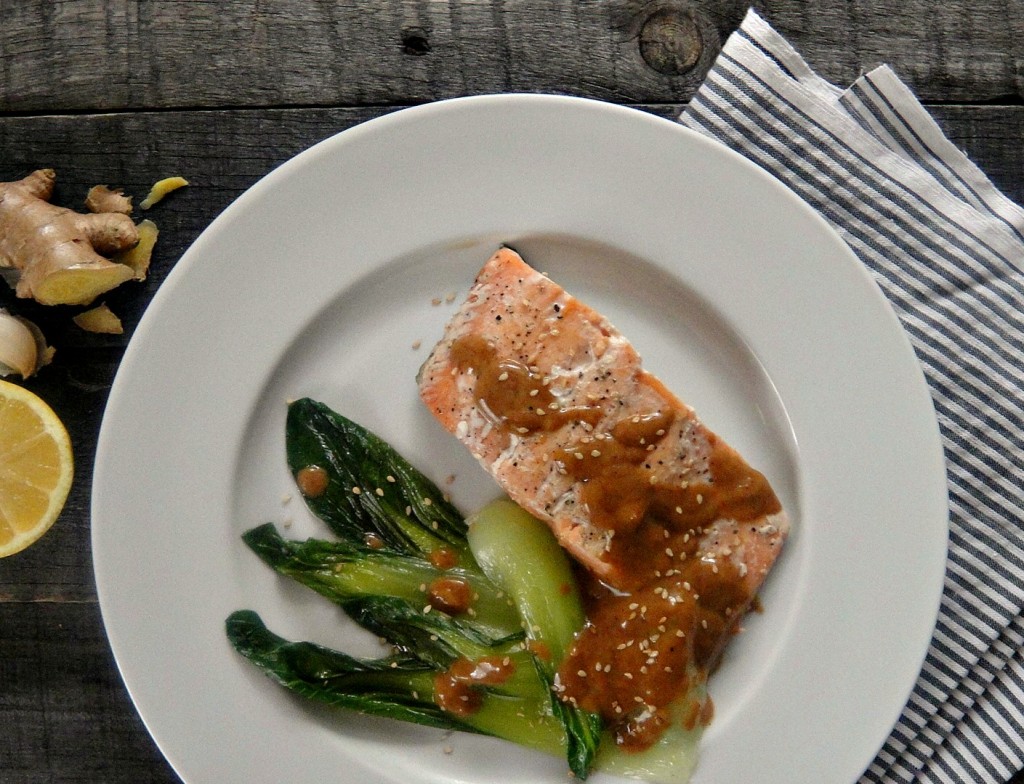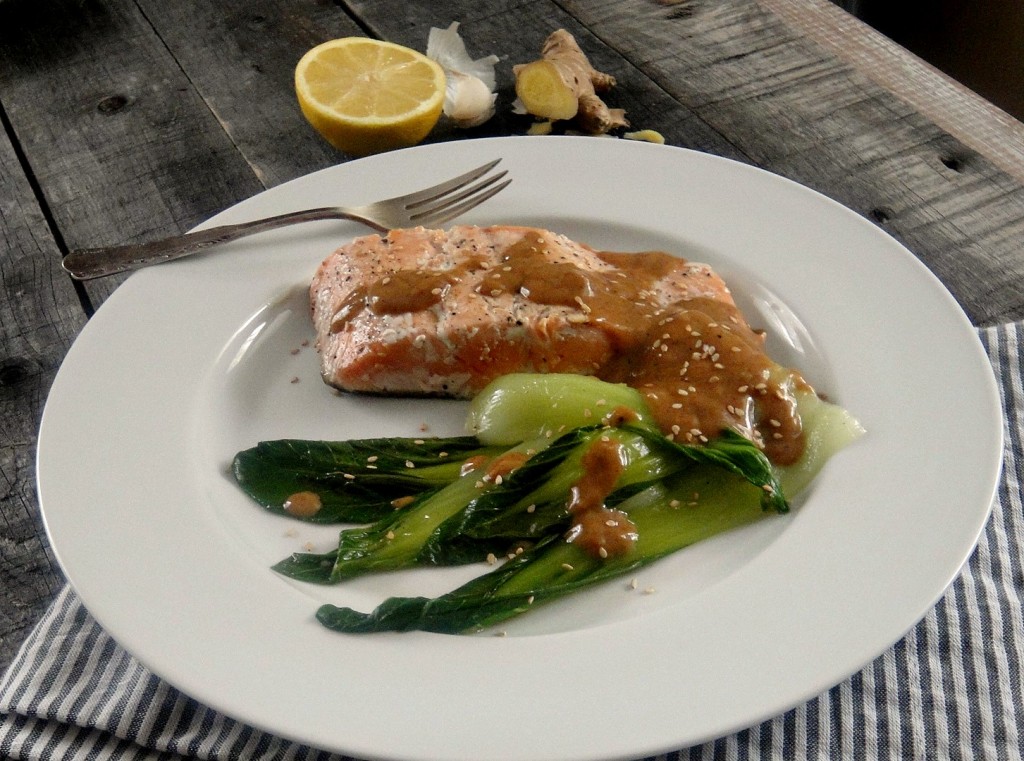Salmon and Baby Bok Choy with Sesame Drizzle (GAPS and Paleo Friendly)
For a long time I would walk past the bok choy in the produce section, cautiously eying it but never brave enough to add it to my basket. It was a little mysterious, somehow elegant and intimidating at the same time. So when I learned of baby bok choy, I thought surely I could handle those little guys.
serves two
Ingredients
-
2 wild caught salmon fillets
-
1 bunch baby bok choy, washed with ends cut off
-
½ cup broth
-
1 tbs coconut oil
-
1-2 cloves garlic, finely chopped
-
1 tsp fresh ginger, grated
-
1 tbs almond butter
-
1 tbs toasted sesame seed oil
-
1 tbs Coconut Aminos or soy sauce*
-
1 tsp honey
-
1 tsp fresh lemon juice
-
sea salt, pepper
Season salmon fillets with salt and pepper. Heat coconut oil in a pan over medium-high heat. Add salmon and cook until desired doneness, about 3-4 minutes each side. Remove fillets from pan (you can cover with foil to keep warm) and add broth and Coconut Aminos/soy sauce. Add bok choy and simmer in broth, covered, until tender (about 5 minutes). Remove bok choy from pan and add remaining ingredients, stirring and reducing until you achieve a thick sauce.
If you’re using store bought broth (why would you be? I already told you how to make the real thing!) your reduced sauce will likely turn out incredible salty. Either use a reduced sodium variety, or replace half of the broth with water. Drizzle the sauce over the salmon and bok choy and enjoy!
*Note: I avoid soy products as they contain phytoestrogens, and almost always come from genetically modified soybeans (94% of soy grown in US is GMO). That being said, traditionally fermented soy products including miso, tempeh, and soy sauce have beneficial properties resulting from the culturing process. These traditionally produced soy products have been consumed in Asian countries for thousands of years and have played a role in the health and low incidence of certain disease and cancer.
The traditional fermentation process used to produce soy sauce can take up to 18 months. Since this is not conducive to high profits, most store-bought brands speed up this procedure by chemically processing soybean meal to produce an end product in as little as two hours. This product is then mixed with sugars and additives to mimic the flavor of traditional soy sauce. The best choice is traditionally produced, raw, unpasteurized soy sauce. Since this product is a little harder to obtain, the next best thing is to buy organic soy sauce or tamari, since products labeled USDA Organic cannot contain GMO ingredients.
other sources:




Allyson, i love your blog! I find myself agreeing completely or learning something new. Going to try this recipe tonight!
thanks for reading! And you definitely should try, it’s so yummy 🙂